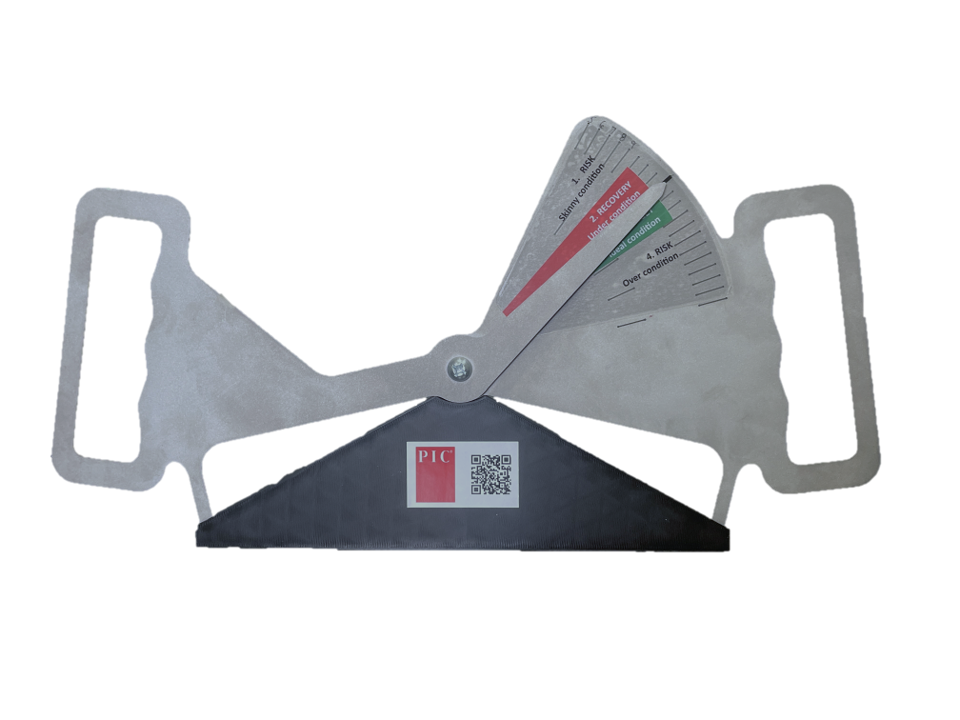This video will show you how to accurately update your existing calipers to the new PIC caliper ranges. This ensures the correct sticker placement and therefore the correct recommendation for feeding the sows in your barn.
Print Instructions – English
Print Instructions – Spanish
Please reach out to your PIC representative for materials to update your caliper.
Why is PIC updating sow body condition ranges?
Today, the PIC Camborough® has an increased genetic potential for growth rate, lean gain, and producing wean pigs. To maximize productivity and sow longevity, PIC has updated the caliper ranges for more accurate body condition scoring and corresponding feeding recommendations specifically to match the PIC female’s genetic potential.
An extensive internal review confirmed that thin sows are at higher risk to prolapse. In addition, both thin and over-conditioned sows are at an increased removal risk. The original caliper “ideal” range was developed to optimize litter size, farrowing rate and preweaning mortality. PIC identified a new optimum range to balance both longevity and productivity. With PIC’s updated caliper ranges, we estimate that approximately 18% of sows that previously fell into the “ideal” category at weaning will now be classified as “thin.”
The caliper remains an excellent tool for measuring body condition and implementing an intuitive female feeding program.
Several versions of calipers currently exist in the field. The calibration tool and new PIC target ranges will work on all versions.
- Risk: skinny condition
- Recovery (Red): under condition
- Target (Green): ideal condition
- Risk: over condition
These four categories directly relate to the updated PIC feeding program guidelines.

Caliper use on gilts
PIC does not recommend using a caliper on gilts to determine feeding level. The first time PIC recommends using a caliper on a PIC female to set feeding levels is after she has weaned her first litter.
Measuring gilt body condition with a caliper at breeding can misread her as “fat.” As a result, feed might be cut during her first gestation, compromising future performance and longevity. However, using a caliper on gilts at farrowing can help monitor her body condition loss during the first lactation.
Feeding Recommendation Updates
PIC has released updated feeding program guidelines that are easier to implement and tie directly to the category on the caliper.
- Sows that fall into the red “recovery” category (2) on the caliper should follow the red feeding recommendation below.
- Sows that fall into the green “ideal” category (3) or “over condition” category (4) should be fed the green feeding recommendation below.
- All gilts should be fed the green feeding recommendation.
- Sows that fall into category 1 (skinny condition) require more intensive management strategies than just providing extra feed to recover. Visit with a PIC technical service team member to discuss what actions are best for your farm.




